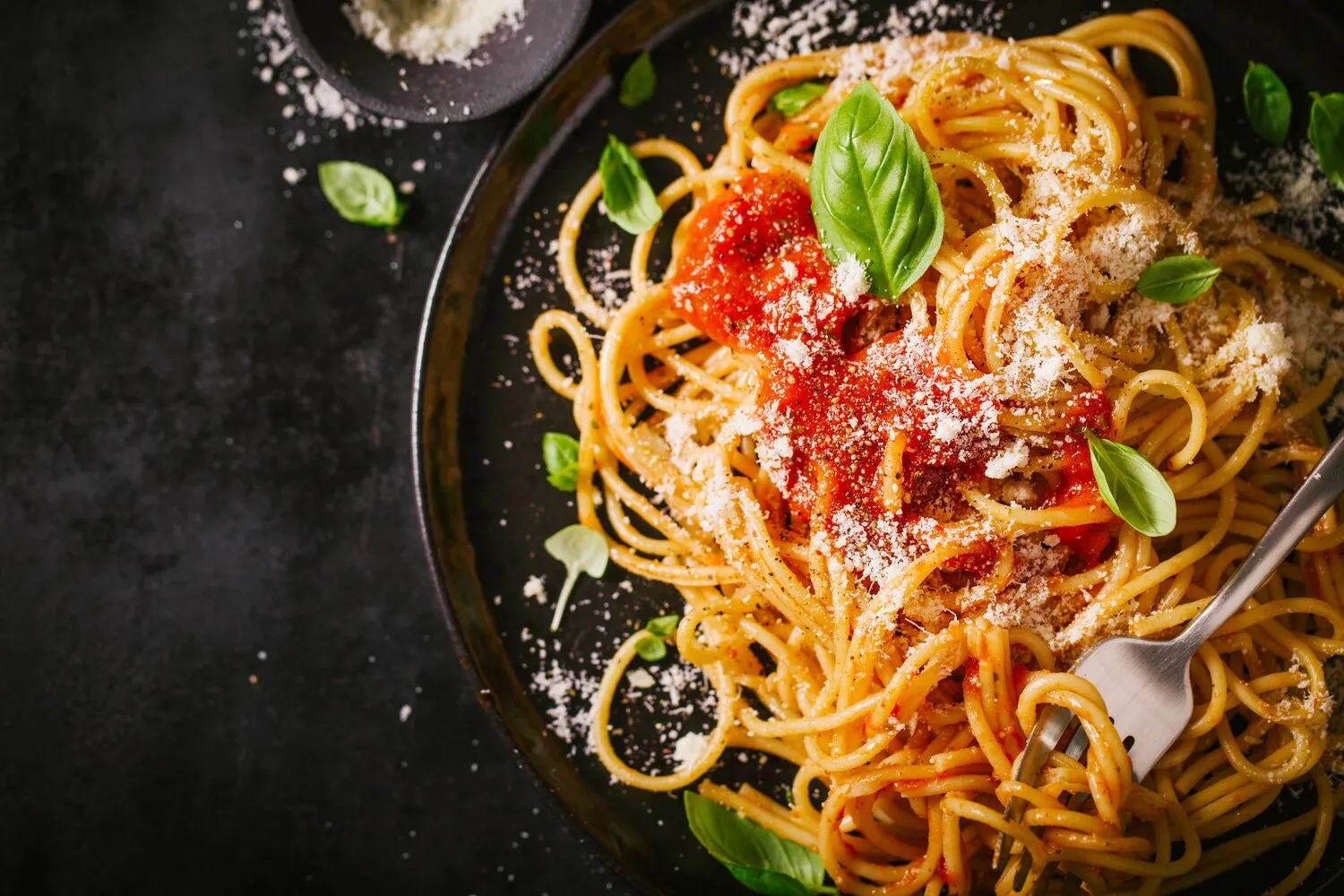
Pasta
Various pasta dishes are offered and generally well-regarded.
Nutrition Facts
* The % Daily Value (DV) tells you how much a nutrient in a serving of food contributes to a daily diet. 2,000 calories a day is used for general nutrition advice.
Pasta's history stretches back to ancient times, with evidence suggesting early forms existed in various cultures. However, modern pasta, as we know it, truly flourished in Italy, evolving from simple flour-and-water mixtures into the diverse array of shapes and styles we see today. Arab influence in Sicily during the Middle Ages played a crucial role in the development and popularization of dried pasta, allowing for easier storage and wider distribution. The Renaissance saw the rise of pasta-making guilds and the creation of more elaborate sauces.
Pasta is deeply ingrained in Italian culture and is more than just a food; it's a symbol of family, tradition, and regional identity.
Family Meals
Pasta dishes are often at the center of family gatherings and celebrations in Italy. Sharing a large plate of pasta is a communal experience that strengthens bonds and fosters connection.
Regional Variations
Each region in Italy boasts its own unique pasta shapes, sauces, and cooking methods. From the rich, creamy sauces of the North to the seafood-infused dishes of the South, pasta reflects the diverse culinary heritage of the country.
Pasta as a First Course
In a traditional Italian meal, pasta is typically served as the 'primo' or first course, followed by a meat or fish dish ('secondo') and a side dish ('contorno').
The flavors of pasta dishes are incredibly diverse, ranging from simple and fresh to rich and savory. The key to a great pasta dish is the balance between the pasta itself and the accompanying sauce and ingredients.
Pasta itself has a subtle, slightly wheaty flavor. The primary flavors come from the sauce and additions. Tomato-based sauces offer sweetness and acidity, while cream-based sauces provide richness and smoothness. Pesto is herbaceous and bright, while olive oil and garlic create a simple yet flavorful base. Cheeses like Parmesan, Pecorino Romano, and ricotta contribute saltiness, sharpness, and creaminess. Meats like pancetta, sausage, and ground beef add savory depth. Vegetables such as mushrooms, zucchini, and eggplant offer earthy and fresh notes. Herbs like basil, oregano, and parsley provide aromatic complexity. The possibilities are endless, allowing for a wide spectrum of flavor profiles.
Salt the Water Generously
Adding salt to the boiling water is crucial for seasoning the pasta from the inside out. Use about 1-2 tablespoons of salt per gallon of water.
Cook Al Dente
Cook the pasta until it is 'al dente,' meaning 'to the tooth.' It should be firm but not hard in the center.
Reserve Pasta Water
Before draining the pasta, reserve about a cup of the starchy cooking water. This water can be added to the sauce to help it emulsify and cling to the pasta better.
Combine Pasta and Sauce Immediately
Add the cooked pasta directly to the sauce and toss to coat. This allows the pasta to absorb the flavors of the sauce while it's still warm.
Explore additional Italian dishes and restaurants
Explore ItalianDiscover top dining spots and culinary experiences in Montpellier.
Explore MontpellierLearn more about the food culture, restaurant scene, and culinary heritage of France.
Explore France
